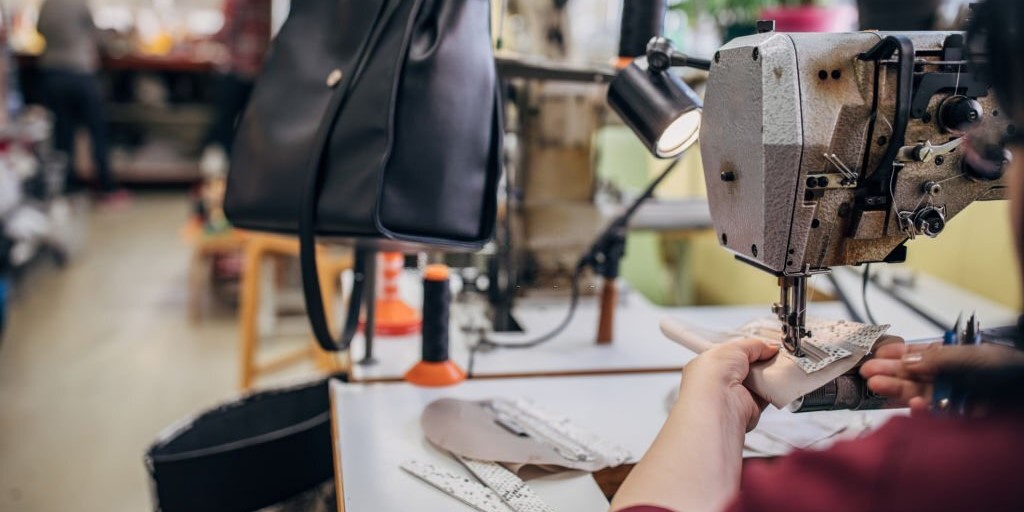How can I repair my handbag?
Nov 23, 2022

How To Quickly Repair Your Handbag At Home
If you treat your handbag with love and respect, it will be useful and fashionable for many years
to come. Fixing any holes or tears right away and washing it whenever it gets dirty will extend
the life of your favorite handbag considerably. It's important to clean your handbag completely
before attempting any sort of bag restoration work on it. There are a few ways to accomplish
this, each optimized for a specific category of damage. It prepares the leather for any necessary
bag restoration treatments and lets you see exactly what needs fixing.
Boring or Parched
To get rid of the obvious dirt and dust on the bag, dampen the cloth and wipe it down all over.
Locate any blemishes or other flaws and address them. Use a small, hidden area, like the bottom
of your bag, to test the leather cleaner. If there are any blemishes or particularly dirty areas, a
leather cleaner can be used on them. Apply the leather cleaner with a soft cloth and rub it in. Toss
out your dishwashing liquid, laundry detergent, and everything else you use to clean your home.
If you wipe the leather cleaner off with a damp cloth that you've dipped in water, the leather will
retain its original appearance. Make sure there is no cleaner residue by repeating this process
multiple times. Dry the purse out completely.
Torn Seams or Stitching
Wear and tear on a handbag, including scratches, is to be expected and can even enhance its
overall appearance. However, if the scratches or cracks are too deep or too numerous, they may
no longer add character and may instead detract from the overall appeal of your bag. The good
news is that there are some techniques for bag restoration.
Once you've cleaned your bag, a quality conditioner can help you fix many minor damages such
as scratches. It may take more than one application for the moisturizer to penetrate the damaged
areas beneath the skin's surface and heal them.
Next, if the crack is deep, gently bend the skin to reveal the surface of the crack. Get some glue
on the end of a toothpick and use it to fill in the crack or scratch from the inside.
Smooth the leather by squeezing the split shut. Extra glue can be quickly removed with a damp
cloth. Give the patch some time to dry. So, go ahead and condition the leather again.
Damaged Stitching or Seams
You can fix torn seams or appliques if you're skilled with a needle and thread. If you want your
bag restoration to look just like the original, you'll need needles and thread designed for leather.
Determine where the seam needs to be fixed. Before you begin, snip off any extra threads.
Put enough thread in two needles to make three times the repair you need to make. Put a knot
near the end of each strand of thread.
Take one stitch from the underside of the leather up through one of the existing holes, beginning
about half an inch before the torn seam in the part of the seam that is still intact. Be sure to tuck
the knot under the base.
Next, take a stitch up through the next pre-existing hole with the other needle, hiding the knot
beneath. Now that you've inserted both needles, they're next to each other in the seam.
Insert the top needle into the lower hole. Both needles, one on each side of the seam, should now
be threaded through the same hole.
Insert a needle into the next available hole, and make a stitch. They'll sew the leather on both
sides by alternating which side of the seam they work on. To finish the mend, keep sewing in a
double stitch.
Make a knot in the underside of the seam with both threads' ends.
Frayed Interior
The interior of your purse is subjected to more wear and tear than the exterior. Although no one
but you will ever see the inside of your bag, it will be much more pleasant to use if the lining is
in good condition. A simple applique can repair holes in the lining.
The piece of fabric should be cut so that its dimensions are about one inch larger in all directions
then the tear.
Make a 1/4-inch tuck inward and fold from the raw edge to the wrong side of the fabric. You can
prevent it from unfolding while you work by pressing it with an iron.
Pin the patch on securely. One or two pins might be all you need.
Ready the needle by threading it and tying off the thread's end.
Pull the thread through the patch from the back. Try catching a bit of the original lining fabric in
a tiny stitch. Bring the needle back up through the patch by sliding it under the lining fabric.
Keep going in this fashion around the patch, and double-check that the pins are holding it in
place at each step. Once the patch is completely sewn on, secure the thread with a knot.
Split Leather Corners
Physical peeling on the leather's surface is indicative of low-quality leather that cannot be
effectively repaired. However, the straps or other high-wear areas of even the highest-quality
leather handbags can peel. That's because the coating in those spots has worn away. The most
susceptible areas are the ones that experience the most flexing. Spots like these can be fixed with
leather paint. This technique also works well for repairing deep scratches on colored leather.
It is recommended that after cleaning your bag, you remove any flaking or loose paint from the
affected area.
Apply a tiny amount of leather paint with the brush to the damaged area. Hang it up to dry.
You'll need to apply multiple coats to reinforce the strap edges. It's possible that you'll need as
many as five or six totals, with drying time in between each.
Recognize the Need for Expert Help For Bag Restoration
You can fix many issues with your beloved handbag using these techniques, but there are some
types of damage that should be handled by an expert. Call a leather handbag repair London shop
in your area if you notice any of these problems: a broken strap, a tear that goes all the way
through the leather, or a heavily discolored spot. Bag restoration can be expertly performed by
these specialists.



